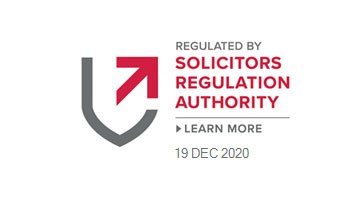Dissolving a company, also known as ‘striking-off‘ or ‘dissolution’, has the effect of removing the business from the registrar of companies at Companies House, so annual returns and accounts no longer need to be filed.
Unlike other methods of closing a business, there will be no liquidation costs to incur, less risk of publicity, and investigation into your conduct as company director will be very unlikely.
However, not everyone can simply dissolve a company: below are strict rules on when the process is applicable. If your company doesn’t meet this criteria, you may have to voluntarily liquidate your company instead.
Criteria / Eligibility
Before proceeding to dissolve your business you’ll need to:
- Pay employees what they’re due, including redundancy payments
- Clear any HMRC debts
- Ensure all debts are fully paid to any creditors
- Make sure all business assets have been distributed to company shareholders
- Make sure you’re deregistered for VAT and PAYE if applicable
- Ensure company accounts and your final tax return are up to date
- Make sure all interested parties know about the impending closure.
- Close Company bank accounts
How to Dissolve a Limited Company
Here’s the basic process to dissolve a limited company.
- Liquidate Company Assets
Once the company is dissolved, any assets remaining automatically pass to the Crown, so be ensure to sell any assets, including digital ones prior to commencing the dissolution process. The Assets sold must be transferred out of company ownership
- Settle Any Debts
Clearing debts is essential unless you wish to have the whole process halted via an Objection. If you have debts you can’t pay, you must liquidate the company via an insolvency practitioner.
- File the Dissolution Paperwork to Companies House Form with Form DS01
You can download the form online , which must be signed by a majority of the directors or follow the Companies House process online here: https://find-and-update.company-information.service.gov.uk/close-a-company/. Please note, Companies House will only accept this in paper form. That means it must be printed out and returned to a physical address.
- Employees
A letter must be distributed to employees, shareholders, creditors, pension managers or trustees, and of course directors of the company’s intention to dissolve. All employee must be paid any final wages and salaries and any rules for paying employee redundancy must be followed.
- Wait for the Striking Off Acceptance Letter
Assuming everything has gone to plan, you’ll receive your acceptance letter stating that your request for striking off will be published in the London Gazette
- A Second Notice in the Gazette Means the Company is Officially Dissolved
At this point the company no longer has any legal substance and does not exist.
Objection to Company Strike Off
Failure to complete any of these steps above could mean you receive an ‘Objection to Company Strike off Letter. If the above steps have not been followed HMRC will want to know why.
Equally, if you owe money to a creditor and try to strike off the company to avoid paying, they are entitled to submit an objection. Moreover, even if you successfully dissolve the company entirely, a creditor can still submit an application to have your business restored in the register. You will then have no choice but to liquidate the company, if you cannot pay the debts, before lawfully closing the business.
How Long Does it Take?
Once the application to Companies House has been made and advertised in the Gazette, it will take at least three months from that point for a company to be officially dissolved.
If the Company is Dormant
If the company is dormant, the process is much simpler. With the agreement of directors, an application to strike-off will be submitted along with the standard £10 fee. It will be advertised in the Gazette and if there are no objections within a 3 month period, it will be struck off.
Alternatives
If the company is solvent, then a members voluntary liquidation is the most tax efficient way of closing down a solvent limited company with assets. A tax break known as Entrepreneurs Relief can help reduce capital gains tax. You’ll pay just 10% of tax on qualifying assets.
If the company is insolvent, an appropriate procedure is likely to be a creditors’ voluntary liquidation when closing down, otherwise you may risk being forced into compulsory liquidation by your creditors. Closing a company down by a creditors’ voluntary liquidation can be beneficial as the directors are less likely to face an investigation and be accused of acting improperly
To determine the best steps for your company and allow a smooth process, special advice must be sought. For more advice on closing a company please contact us at Onyx solicitors, on 0121 268 3208 or email us at info@onyxsolicitors.com with your query.





